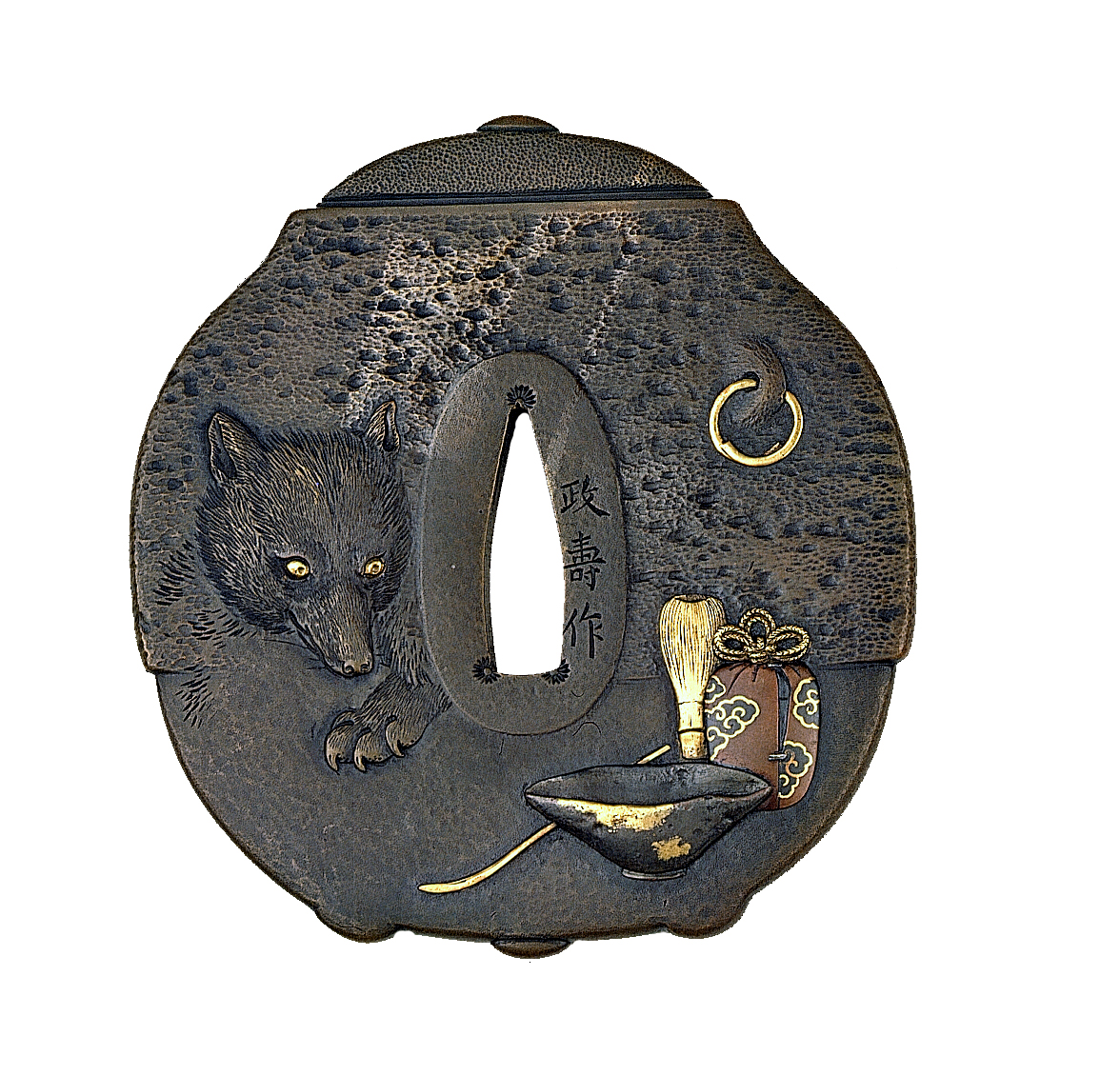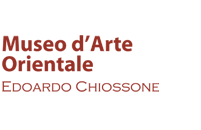
Click here to view image
Hamano school, Japan, Meiji period (1868 – 1912)
sword accessories
bronze inlaid with gold, silver, shakudō and copper, 9,2 x 8,6 cm
The artist, who signed himself Masatoshi, reproduces in this tsuba (sword hilt) a chagama, a kettle for making tea, with a wealth of details: the lid, the feet, the side rings to suspend it on the fire. Inlaid in gold, silver and copper, we find the whisk, the box for the matcha tea powder, the cup and the measuring spoon. Only looking at the face of the tanuki (Japanese raccoon) and the ura side (back) where the animal's tail appears, we realize that the kettle is the body of the tanuki itself. In fact, the tale of Bunbuku Chagama tells that the abbot of the temple of Morinji, a great lover of chanoyu, was preparing to use a new kettle he had just bought when it let out a cry of pain and jumped away from the fire. Incredulous, the abbot saw four legs, a thick tail and a tanuki head sticking out of the chagama. Once caught, the kettle returned to its normal shape but the abbot, to get rid of the problem, gave it to a peddler who passed through the temple. Once home, the tanuki revealed himself to the peddler and begged him not to put it on the fire; in exchange it offered to help him earn money by performing for the crowds. Every day a large paying public gathered to observe the shape-shifting tanuki, thus making the fortune of the peddler.




